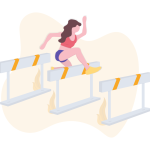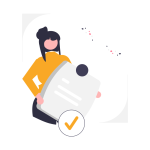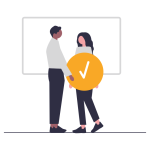
Adapting Biology: Exploring the Endocrine System in Blended Learning Amidst the COVID-19 Pandemic
- SecondaryEducation
- Biology
- EndocrineSystem
Context
People Involved
In the course, 11 people in total took part: the biology teacher and 10 secondary school students (final year). Students had no previous experience with the blended learning methodology since in Cyprus before the COVID-19 crisis all the courses, workshops, and lessons were held in person. Additionally, students had no training from the school or from home on how to manage a blended course, such as the online tools, equipment, etc. However, the biology teacher attended an online webinar organized by the Ministry of Education and Culture to present how to transform the traditional classroom into an online classroom, but the information about blended learning was limited.
Before the transformation
The lessons were carried out in person with only the use of a projector, whiteboard, and printed material, and worksheets. A series of slides were created in the form of a presentation to be used on the projector.
The transformation
After the transformation
Following the lesson, the students were assessed through a test designed to evaluate their understanding of the material covered. This quiz took place online and was created using the ‘Kahoot’ platform, known for its interactive and engaging features. Students joined online at the same time using the nickname they prefer, and they simultaneously completed the multiple-choice questions. Remarkably, the students achieved notably high grades in this assessment.
Technologies Employed
- Zoom – for the hosting of the virtual lesson
- PowerPoint Presentation – used by the teachers to deliver their lesson
- Google worksheets – created by teachers for the students to use them to fill in the documents at the same time
- Camera, microphone, projector – used by the teacher for blended learning
- YouTube – students were given a list of tutorials to watch
Reflections
Challenges Faced

The endocrine system involves intricate processes and a lot of memorisation, which can be better facilitated through direct interactions, live demonstrations, and hands-on activities that a physical classroom setting offers. Also, some students had poor internet connections, so they couldn’t always follow every single part of the lesson.
The students were able to understand and grasp the concepts that were discussed during the lesson. During the blended learning method, students learned how to use Zoom and Google documents, such as Google Docs (word) and Google Sheets (spreadsheets). There was active participation, thoughtful questions, and excellent quiz results on the ‘Kahoot’ platform showing the commitment to learning despite the challenges. Additionally, students enjoyed the online quiz and found it interactive and fun, making it an engaging method for teachers to test the students.
What went well?


Was it worth it?
It was worth introducing simple yet new technologies to the students that will be also useful later on in their careers. However, biology is one of the subjects that teachers often prefer to teach face-to-face because of the experiments and labs. Lastly, teachers are making a huge effort to use new technologies and specific tools that will help them with the biology lessons for blended learning.
